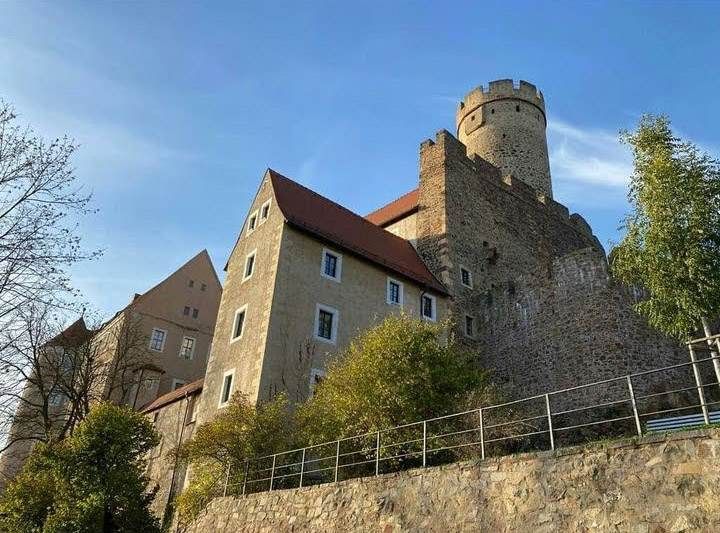
Trutzig si svegliò al castello di Gnandstein, arroccato su una roccia di porfido che domina la valle del Wyhra.. In un primo momento fu costruito un muro quasi rettangolare su un piccolo scoglio disabitato, nell'angolo sud-ovest del quale fu costruita la torre della residenza, la prima persona nella zona in cui ci troviamo ora. Tuttavia, il primo edificio a tre piani fu costruito nel 1220. Anche se presto, il perimetro sul lato est ha cambiato il muro laterale, che è una parte importante del muro
Trutzig awoke at Gnandstein Castle, perched on a porphyry rock overlooking the Wyhra Valley.. At first an almost rectangular wall was built on a small uninhabited cliff, in the southwest corner of which the residence tower was built, the first person in the area where we are now. However, the first three-story building was constructed in 1220. Although early, the perimeter on the east side changed the side wall, which is an important part of the wall
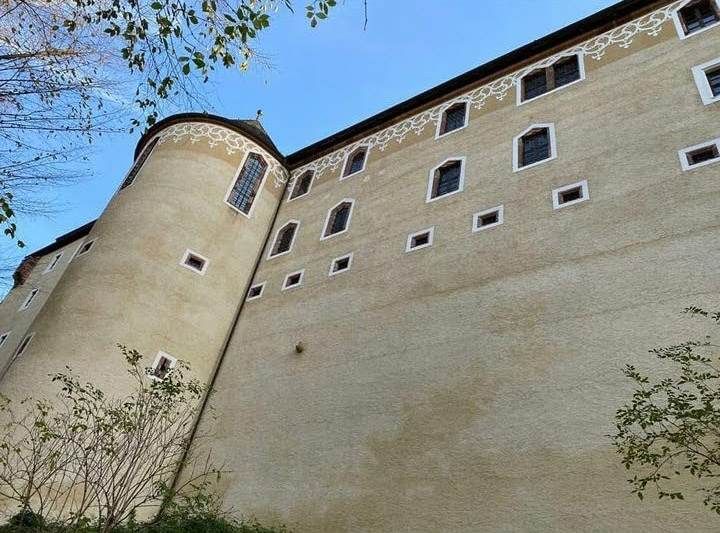
. La torre di 33 metri fu costruita a metà del XIII secolo ... Ma ha una parete di ca. 3,5 m di lato. La stanza è invece suddivisa in sei piani in legno. La porta originaria si trovava circa 8 m sopra il sito attuale. Nel XIV secolo ci furono molti cambiamenti. Ad esempio, il palazzo è stato costruito sullo stesso terreno e il Kemenatenflügel a est è collegato all'edificio. Nel XV secolo vi furono importanti modifiche ed ampliamenti.
The 33-meter tower was built in the mid-13th century ... But it has a wall of about 3.5 m on the side. Instead, the room is divided into six wooden floors. The original door was about 8 m above the present site. There were many changes in the 14th century. For example, the palace was built on the same land and the Kemenatenflügel to the east is connected to the building. In the 15th century there were major modifications and extensions.
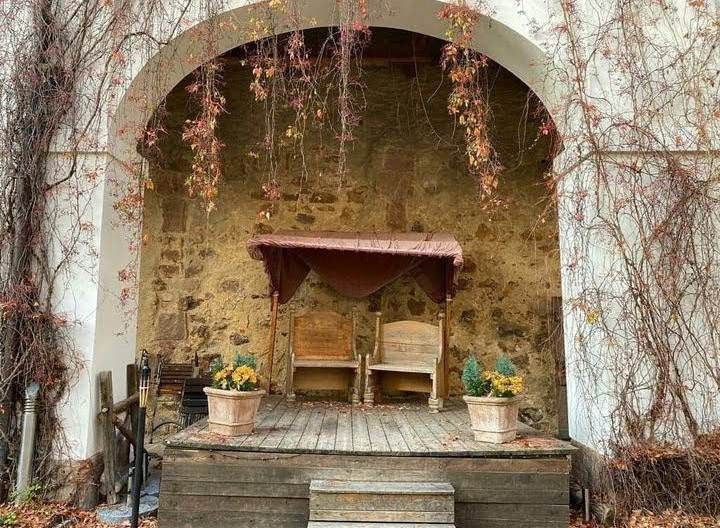
La costruzione della porta può essere iniziata nella prima metà del XV secolo. Furono inoltre costruite l'ala della residenza gotica e l'antica chiesa gotica, sopra l'attuale diga sui lati sud e nord della rocca. I pozzi possono essere costruiti solo durante la costruzione. Poi, nel XVII secolo, ci furono molte distruzioni. L'esercito svedese appiccò un incendio nel 1632 e nel 1646/47 l'ala sud fu gravemente danneggiata da un fulmine. Nella seconda metà del 17° secolo quasi tutte le case ottennero nuove costruzioni o torri.
Construction of the gate may have begun in the first half of the 15th century. The Gothic residence wing and the old Gothic church were also built above the present dam on the south and north sides of the fortress. The wells could only be built during the construction. Then, in the 17th century, there was much destruction. The Swedish army set a fire in 1632, and in 1646/47 the south wing was badly damaged by lightning. In the second half of the 17th century almost all the houses got new buildings or towers.

Tuttavia, i lavori interni iniziarono solo più di tre quarti del secolo. All'inizio del XVIII secolo, il gotico Wendelstein fu sepolto in un cortile interno circondato da un'ampia sala da ballo e strade in pietra. I muri del giardino dell'ala sud e dell'ala Kemenaten sono dipinti. Negli anni '90 sono stati effettuati scavi archeologici intorno al parco del castello di Zwingerhof. Alla fine, il risultato è stato un notevole miglioramento dell'ordine cronologico dell'edificio originale del castello di Gnandstein. Successivamente, l'intero tempio fu ricostruito.
However, interior work did not begin until more than three-quarters of the century. In the early 18th century, the Gothic Wendelstein was buried in an inner courtyard surrounded by a large ballroom and stone streets. The garden walls of the south wing and the Kemenaten wing are painted. In the 1990s, archaeological excavations were carried out around the Zwingerhof castle grounds. In the end, the result was a remarkable improvement in the chronological order of the original Gnandstein castle building. Subsequently, the entire temple was reconstructed.
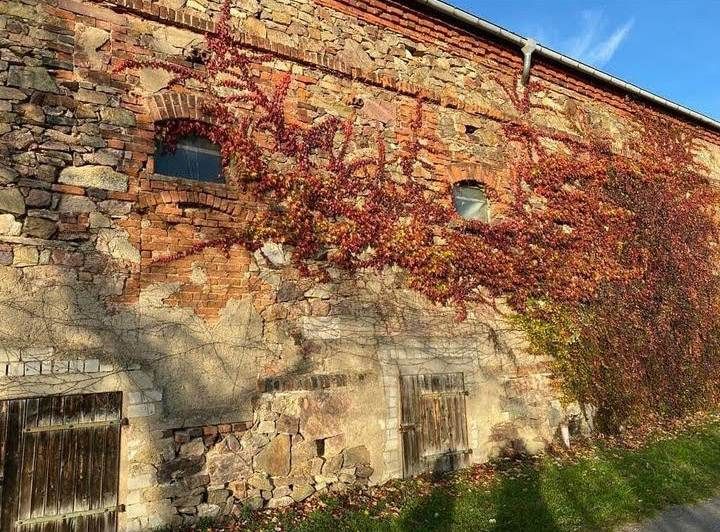
Nell'ambito di un importante progetto di costruzione, l'ala sud è stata la prima nel 1994 ad essere completamente chiusa. Una volta fatto ciò, l'intera parte è finita. Il progetto è stato parzialmente completato nel 2000. Gnandstein si trova nel mezzo della regione di Kohrener, una delle migliori e più belle destinazioni turistiche tra Lipsia e Chemnitz. . Il castello è considerato il meglio conservato in Sassonia. Geografia
As part of a major construction project, the south wing was the first in 1994 to be completely enclosed. Once this was done, the entire part was finished. The project was partially completed in 2000. Gnandstein is located in the middle of the Kohrener region, one of the best and most beautiful tourist destinations between Leipzig and Chemnitz. . The castle is considered the best preserved in Saxony. Geography

La torre sorge su una collina che domina la valle del fiume Wyhra nella Sassonia centrale. È al confine con la Turingia. Storia
Il castello fu costruito in stile romanico nel XIII secolo, probabilmente solo con pianta rettangolare e torre residenziale. Parti dell'attuale edificio risalgono a questo primo periodo. Il muro esterno è allungato più volte. Durante la Guerra dei Trent'anni, l'esercito svedese attaccò il castello e lo distrusse parzialmente. Poco prima della fine della battaglia, l'ala sud prese fuoco dopo essere stata colpita da un fulmine.
The tower stands on a hill overlooking the Wyhra River valley in central Saxony. It is on the border with Thuringia. History
The castle was built in the Romanesque style in the 13th century, probably only with a rectangular plan and residential tower. Parts of the present building date from this early period. The outer wall is stretched several times. During the Thirty Years' War, the Swedish army attacked the castle and partially destroyed it. Shortly before the end of the battle, the south wing caught fire after being struck by lightning.
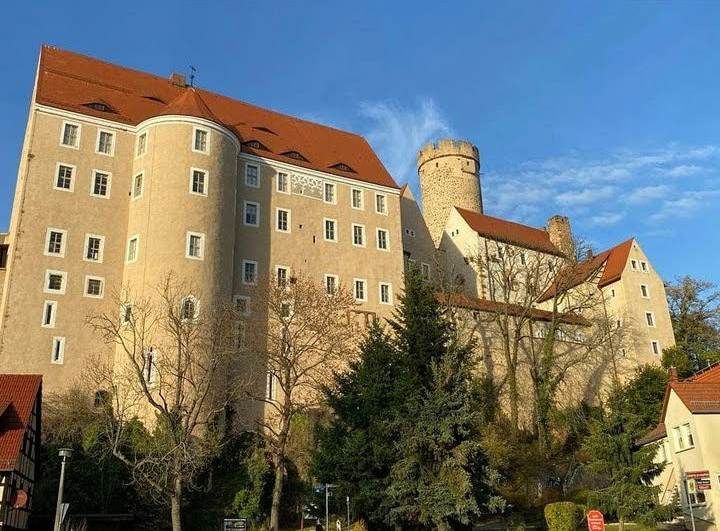
buona casa
La casa del pozzo è alta più di 33 metri, offrendo al visitatore una visione del luogo. Ha lavorato come guardia. Le visite guidate sono disponibili al castello di Gnandstein a Gnandstein, situato a Frohburg, nella regione di Lipsia in Sassonia. Il castello è considerato il miglior muro romanico della Sassonia. Si trova nella zona turistica di Kohrener Land.
well house
The well house is more than 33 meters high, offering visitors a view of the place. He worked as a guard. Guided tours are available at Gnandstein Castle in Gnandstein, located in Frohburg in the Leipzig region of Saxony. The castle is considered the best Romanesque wall in Saxony. It is located in the Kohrener Land tourist area.
Congratulations, your post has been curated by @r2cornell, a curating account for @R2cornell's Discord Community.